
| Home | FAQs | Rules | Archives | Articles | Jobs | Links | KWHSS | OSCAR | SCA.org |
Heraldry for Non-Heralds
Section 8: Postures
Note: All art on this page drawn by Master Bruce Draconarius of Mistholme. Used by permission of the artist. Master Bruce’s heraldic artwork, including the Pictorial Dictionary of Heraldry, can be found at Mistholme.com.
You’ve probably noticed either in SCA armory or in period rolls of arms that heraldic creatures are depicted in different body positions, which are called “postures.” As someone designing their armory, you have several options for what posture you want your beast to be in.
First, let’s start with the quadrupeds, beasts with four legs. Quadrupedal postures include:
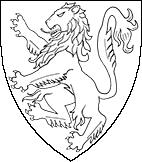
body erect, three limbs up, one limb down
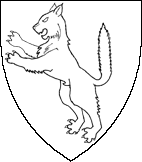
(leaping)body erect, two limbs up, two limbs down

(standing) body horizontal, four limbs down
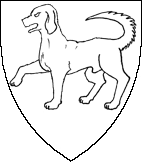
(walking) body horizontal, three limbs down, one limb up
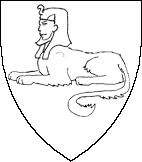
(laying down) body horizontal, limbs tucked beneath the body
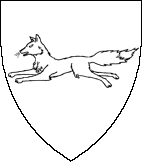
(running) body horizontal, four limbs up

(sitting) body bendwise, forelimbs down, hindlimbs tucked

(sitting up/begging) body erect, forelimbs up, hindlimbs tucked
Winged quadrupeds, including dragons, griffins, hippogriffs, and the like, have a special term for rampant: segreant. Other specialized terms for quadruped postures include, but are not limited to:
- Clymant (rampant) – goats
- Trippant (passant) – deer
- Lodged (couchant) – deer
- At gaze (statant, head turned to face the viewer) – deer
Bipedal tailed creatures, such as wyverns, sea-beasts, and the like, default to erect (upright body, raised limbs) though statant/sejant (bendwise or horizontal body, lowered limbs) is not uncommon.
Next, we’ll talk about avians. Bird postures include:

body facing front, limbs spread

body erect, wings at rest close to the body
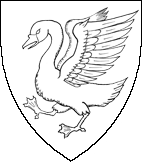
body bendwise, wings back
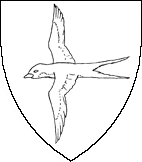
body horizontal, legs tucked, wings spread
There are also some postures that are specific to certain birds, such as peacocks “in their vanity” (body facing front with tail fanned), cranes “in their vigilance” (like close, but holding a rock menacingly in one foot) and pelicans “in their piety” (stabbing their breast with their beak to feed their blood to their chicks).
Finally, we will discuss fish, reptiles, and insects. Fish and snakes have their own posture terminology, while most other reptiles and all insects are tergiant (see below) by default.
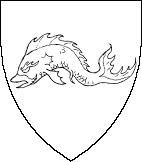
body horizontal

body vertical, head to chief
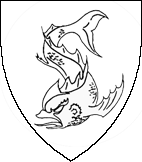
body vertical, head to base

body tied in a knot
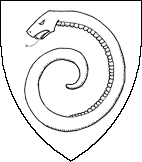
body curling into a spiral

body horizontal, typically undulating
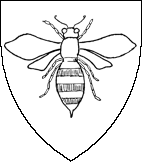
body vertical, back to viewer
Many of these postures can be modified slightly with additional words, such as:
- Guardant: head facing the viewer
- Reguardant: head turned to look behind the creature
- Wings addorsed: wings set next to each other on one side of the creature, typically behind their back
- Wings displayed: wings are set on either side of the creature’s body
- Coward: tail is tucked between hind limbs
- Tail nowed: tail is tied in a knot
- Queue-forchy: tail is forked
This is not an official publication of the Society for Creative Anachronism, Inc. nor does it seek to delineate SCA policies. The views expressed herein are those of the author, and do not necessarily reflect those of the SCA, its officers, members, or affiliates. All contents ©2009-2013, Kevin Rhodes. Please contact the author before reproduction.
The heraldry.sca.org site is copyright 1995-2024 Society for Creative Anachronism, Inc. The copyright of certain portions of heraldry.sca.org are retained by the original contributors as noted.
External links are not part of the heraldry.sca.org web site. Inclusion of a page or site here is neither implicit nor explicit endorsement of the site. Further, SCA, Inc. is not responsible for content outside of heraldry.sca.org. For information on how SCA uses collected and submitted data, please see the Privacy Policy.
Paper texture used with permission from GRSites.com.